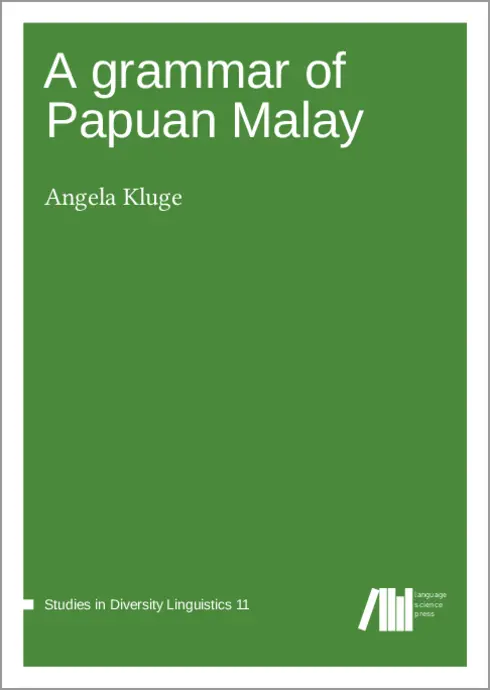
A grammar of Papuan Malay
No ratings
Angela Kluge
Copyright Year:
Publisher: Language Science Press
Language: English
Formats Available
Conditions of Use
![]() Attribution
Attribution
CC BY
Table of Contents
- Chapter 1: Introduction
- Chapter 2: Phonology
- Chapter 3: Word-formation
- Chapter 4: Reduplication
- Chapter 5: Word classes
- Chapter 6: Personal pronouns
- Chapter 7: Demonstratives and locatives
- Chapter 8: Noun phrases
- Chapter 9: Adnominal possessive relations
- Chapter 10: Prepositions and the prepositional phrase
- Chapter 11: Verbal clauses
- Chapter 12: Nonverbal clauses
- Chapter 13: Negative, interrogative, and directive clauses
- Chapter 14: Conjunctions and constituent combining
- Appendix A: Word lists
- Appendix B: Texts
- Appendix C: Overview of recorded corpus
- Appendix D: OLAC resources for the languages of the Sarmi regency
- Appendix E: Population totals for West Papua
- Appendix F: Affixation
About the Book
This book presents an in-depth linguistic description of Papuan Malay, a non-standard variety of Malay. The language is spoken in coastal West Papua which covers the western part of the island of New Guinea. The study is based on sixteen hours of recordings of spontaneous narratives and conversations between Papuan Malay speakers, recorded in the Sarmi area on the northeast coast of West Papua. Papuan Malay is the language of wider communication and the first or second language for an ever-increasing number of people of the area. While Papuan Malay is not officially recognized and therefore not used in formal government or educational settings or for religious preaching, it is used in all other domains, including unofficial use in formal settings, and, to some extent, in the public media. After a general introduction to the language, its setting, and history, this grammar discusses the following topics, building up from smaller grammatical constituents to larger ones: phonology, word formation, noun and prepositional phrases, verbal and nonverbal clauses, non-declarative clauses, and conjunctions and constituent combining. Of special interest to linguists, typologists, and Malay specialists are the following in-depth analyses and descriptions: affixation and its productivity across domains of language choice, reduplication and its gesamtbedeutung, personal pronouns and their adnominal uses, demonstratives and locatives and their extended uses, and adnominal possessive relations and their non- canonical uses. This study provides a starting point for Papuan Malay language development efforts and a point of comparison for further studies on other Malay varieties.
About the Contributors
Author
Angela Kluge earned a PhD in Linguistics from Leiden University in 2014 and an MA in Language and Communication Research from the College of Cardiff (University of Wales) in 2001. She has been a member of SIL International since 1988. After a year of French studies she began working in Benin, Ghana, and Togo, where she conducted sociolinguistic research from 1992 until 1999. In 2001, she moved to Indonesia, where she worked as a senior survey consultant, teaching, training, and mentoring language survey specialists. In 2003, she became a Senior Language Assessment Consultant with SIL International. She is also a reviewer of the SIL Electronic Survey Reports series. After her PhD studies, Angela Kluge resumed her work as a senior survey consultant with SIL International in South East Asia.
